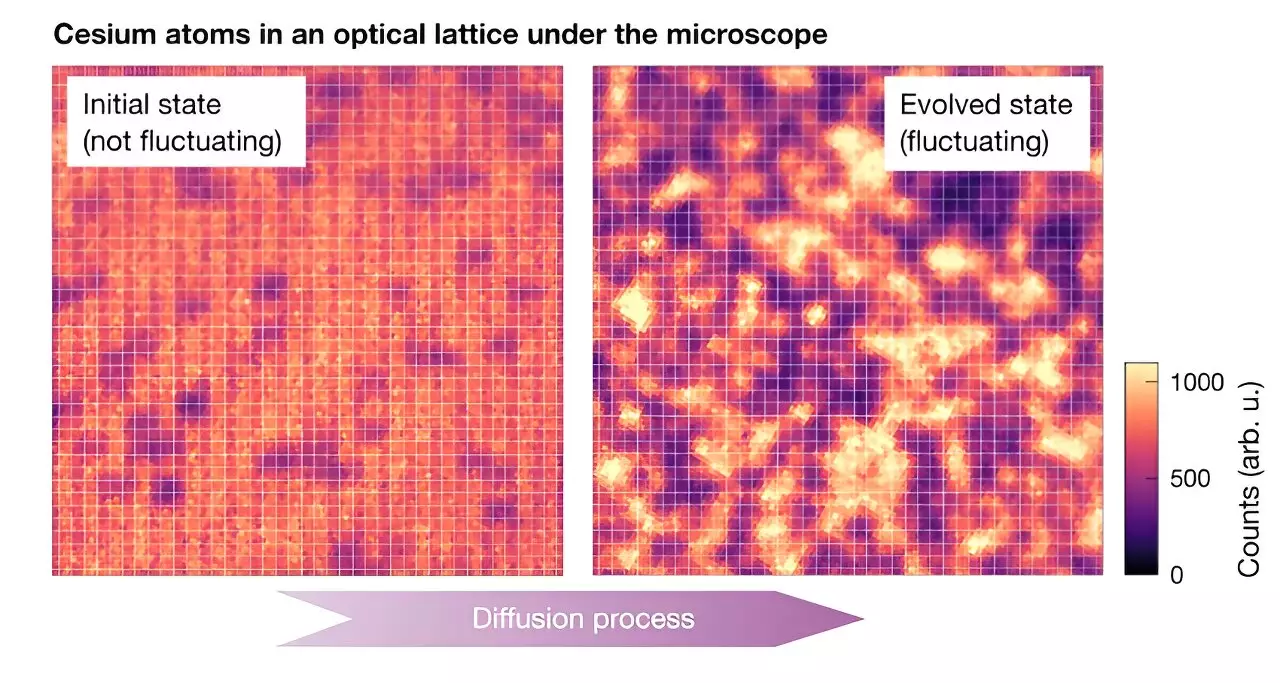The field of quantum physics continues to intrigue researchers with its complex behaviors and interactions. A significant stride toward understanding such complexities has been achieved through an extensive collaboration involving Ludwig-Maximilians-Universität, the Max-Planck-Institut für Quantenoptik, Munich Center for Quantum Science and Technology, and the University of Massachusetts. Their recent publication in *Nature Physics* uncovers critical insights into the equilibrium fluctuations observed in large quantum systems, utilizing cutting-edge quantum gas microscopy as a key experimental tool.
Simulating the behavior of numerous particles within a confined space typically presents a daunting challenge due to the inherent complexity of quantum systems. Julian Wienand, one of the co-authors of the published study, articulates the difficulties of accurately predicting individual particle movements due to varying interactions and the computational limitations of existing models. The sheer number of particles involved poses significant obstacles in accurately simulating their trajectories and states, suggesting that traditional computational resources are often inadequate.
The innovative pivot toward hydrodynamics represents a promising solution in circumventing these limitations. By embracing hydrodynamics, researchers can leverage a macroscopic approach to describe particle interactions, effectively transforming the way in which extensive systems are analyzed. This method simplifies the representation of the particles into a continuous density field, thereby allowing for manageable mathematical expressions and predictions.
Fluctuating hydrodynamics (FHD) emerges from a classical hydrodynamic framework, integrating the impact of thermal fluctuations into the modeling process. Wienand describes the FHD model as accounting for random microscopic fluctuations evolving within a system, likening these changes to white noise. This nuanced approach presents an advanced understanding of the dynamic nature of quantum systems, enabling physicists to systematically quantify these fluctuations by using established thermodynamic principles.
It’s noteworthy that while FHD has been effectively applied to classical systems, its application to chaotic quantum systems has remained uncertain until now. Quantum systems present unique challenges, particularly due to phenomena like entanglement, which can complicate predictions and calculations. The researchers’ findings signify a potential breakthrough, suggesting that the principles underlying FHD may apply to chaotic quantum realms as well.
To validate their theoretical insights, the research team employed a cesium quantum gas microscope, which enables the visualization and manipulation of ultracold atoms within an optical lattice. This setup allowed researchers to investigate a quantum many-body system by initially placing cesium atoms into a structured arrangement before altering the lattice conditions to initiate movement and interactions among the particles.
By conducting these experiments, the researchers meticulously documented the fluctuations arising throughout the diffusion process and during the subsequent thermalization phase. The results illuminated the evolution of these fluctuations over time, confirming their theoretical predictions regarding the applicability of FHD to chaotic quantum systems. The determination of a vital parameter known as the diffusion constant allowed insights into how macroscopic behaviors relate to microscopic interactions, providing a deeper understanding of quantum dynamics.
The implications of this research extend beyond theoretical advancements; they present potential applications across various fields that hinge on quantum behaviors. By establishing a link between the elementary quantum mechanics and macroscopic representations, researchers now possess a robust framework for characterizing complex quantum systems. The research team’s findings advocate a paradigm where intricate microscale interactions can result in simplified macroscopic phenomena.
Moreover, Wienand and his collaborators are eagerly embarking on further research endeavors to probe additional complexities and unanswered questions regarding quantum systems. Future investigations aim to explore how fluctuations behave in non-thermalized settings, assess higher-moment statistics, and adapt FHD to tackle more intricate observables and exotic systems. These essential questions promise to expand the horizons of quantum physics, potentially unveiling new phenomena aligned with the unpredictable nature of quantum mechanics.
The rigorous investigation into equilibrium fluctuations within chaotic quantum systems underscores both the challenges and the remarkable potential of contemporary quantum physics research. By merging theoretical frameworks like fluctuating hydrodynamics with experimental validation through advanced microscopy, researchers are carving a path toward greater comprehension of quantum phenomena. This work lays the groundwork for significant advancements, potentially shaping how scientists approach quantum systems and their complex behaviors in the years to come. As the field progresses, it will be fascinating to observe how these insights will redefine our understanding of the quantum world.


Leave a Reply